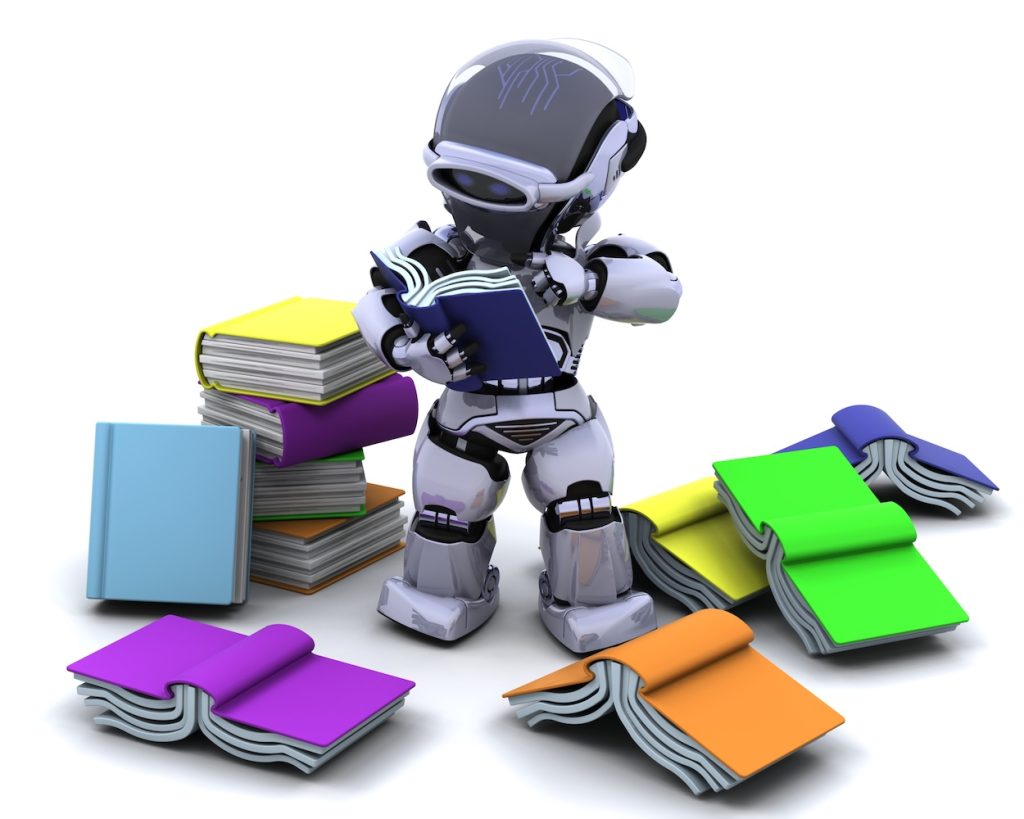
How AI is Transforming Learning: Key Applications, Benefits, and Future Trends
- Author: Urban Rotar
- Published:

How does AI personalize learning experiences?
AI personalizes learning by analyzing student data to tailor educational content, adapting to individual strengths and weaknesses, and creating unique learning paths that enhance engagement and improve outcomes.
What are the benefits of AI for educators?
AI helps educators by automating tasks like grading, offering data insights on student progress, and freeing up time for more focused, personalized teaching interactions.
How does AI support lifelong learning?
AI empowers lifelong learning by offering continuous, flexible educational opportunities tailored to individual goals. It enables learners to acquire new skills at any stage, adapting content as they progress, which is ideal for career advancement and personal development in a fast-evolving world.
Key Takeaways - AI and Learning
- AI customizes learning experiences by creating unique paths based on each learner’s strengths and weaknesses, improving engagement and outcomes.
- AI reduces administrative tasks and training costs, allowing organizations to allocate resources more effectively in education.
- AI helps organizations address skill gaps through targeted learning interventions, making training more relevant to individual needs.
- Privacy and data security are vital, requiring responsible data use and a balance between AI and human interaction.
- Emerging AI trends, like VR and predictive analytics, promise more immersive, accessible, and equitable learning experiences.
Benefits of AI for Learners and Educators
AI brings numerous benefits to both learners and educators. For learners, AI provides the flexibility to access resources on their terms, which enhances motivation and retention. Personalized learning paths, supported by AI, cater to students’ unique abilities and learning styles, ensuring that learners progress at their own pace and fully understand each concept before moving on.
For educators, AI reduces administrative burdens, enabling them to focus more on teaching and interacting with students. Tasks such as grading, attendance, and even routine feedback can be automated, saving time and allowing teachers to offer more targeted support where needed.
Additionally, AI can act as a virtual teaching assistant, providing data insights that help educators understand where students are struggling and what interventions may be most effective. By integrating AI into the learning ecosystem, educators can better respond to the diverse needs of their students and create a more dynamic learning environment.

How AI is Transforming Learning and Development: Future Perspectives
In the modern era, artificial intelligence (AI) is revolutionizing the educational landscape, making learning more engaging, accessible, and personalized. AI’s role in education has moved beyond automation and towards a transformative force, helping institutions and organizations redesign learning experiences and increase overall engagement. As the global economy shifts toward a knowledge-centric model, integrating AI in learning and development presents a promising avenue to meet evolving educational demands while fostering lifelong learning.
AI has also ushered in what is known as “Education 4.0,” a model that aligns education with the needs of Industry 4.0, marked by digitalization and interconnectivity. This model is a step beyond conventional teaching, aiming to develop skills for emerging technologies and interconnected systems.
By providing adaptive learning technologies, AI enables customized learning pathways, thereby enhancing student outcomes and making education relevant to individual needs.
Understanding the Role of AI in Modern Education
AI in modern education bridges gaps by addressing some of the challenges associated with traditional teaching methods. It allows for continuous, individualized learning, which is crucial as educators and learners come from diverse backgrounds and have varying needs. Through AI, learning environments can become more flexible, offering students learning opportunities anytime, anywhere.
One prominent role AI plays in education is through intelligent tutoring systems (ITS), which use algorithms to guide students based on their progress. These systems simulate one-on-one tutoring experiences, monitoring student interactions and adjusting the material or feedback accordingly.
In addition, AI enables data-driven decision-making in educational settings. By analyzing student data, educators can identify patterns and tailor teaching approaches for different learning preferences and requirements, fostering a more inclusive educational environment.
Key Applications of AI in Learning
AI’s transformative power in education is evident through its various applications that contribute to a more engaging and efficient learning experience. These applications enhance the traditional classroom model by providing personalized support, adaptive technologies, and automated content, among other benefits.
Personalized Learning Paths
Personalized learning paths powered by AI are reshaping educational methodologies by tailoring content to meet individual needs. This process involves analyzing students’ past performance, strengths, and weaknesses to create a unique educational trajectory that optimizes learning outcomes.
Personalized learning paths are especially beneficial for students with specific learning challenges, as AI can offer specialized assistance that ensures comprehension and mastery of subjects.
AI makes it possible for students to advance at their own pace without waiting for others, enhancing motivation and self-confidence. This tailored approach helps learners feel more in control of their educational journey, fostering a positive learning experience.
Adaptive Learning Technologies
Adaptive learning technologies are a cornerstone of AI-powered education, offering dynamic, real-time adjustments to educational content based on each student’s progress. These systems assess student interactions and responses to determine the ideal level of difficulty and type of content.
For instance, if a student struggles with a particular concept, an adaptive learning platform might present additional exercises or switch to a simpler explanation to reinforce understanding.
These technologies are highly effective in maximizing learning efficiency and engagement by ensuring that students are neither under-challenged nor overwhelmed. Furthermore, they provide teachers with valuable insights into individual student progress, enabling data-driven intervention to address learning gaps in real-time.
Automated Content Curation and Delivery
Automated content curation involves using AI algorithms to collect, organize, and distribute content based on user preferences and educational goals. For example, AI can generate recommendations for further reading, resources, or exercises that align with a student’s learning journey. In corporate training, AI-driven curation keeps learners engaged with content that is most relevant to their current role and growth path, ensuring continuous skill development.
Automated delivery, meanwhile, involves delivering these curated materials at optimal intervals, based on principles of spaced repetition, to enhance retention. AI’s capacity to manage both curation and delivery makes it invaluable in distance learning and self-paced educational environments, where maintaining engagement and relevance is crucial.
AI-Driven Tools Enhancing Learning
AI-driven tools are reshaping the educational landscape by making learning more interactive, accessible, and engaging. These tools serve a variety of functions, from enhancing classroom instruction to simulating real-world applications, thus creating a holistic learning experience.
AI-Powered Learning Platforms Features
AI-powered learning platforms utilize algorithms to track user behavior, assess strengths and weaknesses, and personalize course material accordingly.
Some platforms use gamification and adaptive algorithms to keep users engaged and improve language retention, while others use AI-based recommendations to guide learners to courses that align with their interests and career goals.
AI-powered learning platforms often include performance analytics, providing insights into areas where students excel and where they may need extra support.
Virtual Assistants, Chatbots, and Simulations in Learning
Virtual assistants and chatbots are revolutionizing the way learners interact with educational materials. These tools provide instant feedback, answer questions, and guide learners through complex problems in real-time. Chatbots serve as a helpful resource for quick questions, freeing educators to focus on more intensive instructional needs.
Simulations, another powerful AI-driven tool, provide immersive learning experiences in fields such as medical training, engineering, and science. By replicating real-world scenarios, simulations allow learners to practice skills in a safe, controlled environment, boosting both confidence and competence. For example, medical students can use virtual reality simulations to perform mock surgeries, gaining experience and honing skills without risk.
Bridging Skill Gaps and Increasing Engagement
For organizations, AI is invaluable in identifying and addressing skill gaps. By analyzing employee performance and tracking progress, AI algorithms highlight areas needing improvement and direct employees to tailored learning resources. This targeted approach increases learner engagement, as individuals receive resources that resonate with their specific goals and challenges. Personalized learning experiences foster a sense of achievement, improving retention rates and making learning more interactive and relevant.

Cost and Time Efficiency in Training and Development
AI offers substantial cost and time savings, transforming training and development. By automating repetitive tasks such as grading, administrative work, and content distribution, AI reduces the workload for educators and cuts down associated costs. Virtual training modules, for instance, allow employees to learn independently, eliminating the need for in-person sessions and lowering travel expenses.
Additionally, AI platforms provide real-time performance analytics, allowing organizations to quickly adjust training initiatives for optimal results.
Benefits of AI for Organizations and Learners
AI’s integration in learning environments is beneficial for both organizations and learners, streamlining training processes and enhancing the educational experience. AI supports organizations in addressing skill gaps while improving learner engagement. It brings measurable improvements in productivity, resource efficiency, and learning satisfaction.
Challenges and Ethical Considerations
While AI holds tremendous promise, challenges and ethical concerns are integral to its adoption in learning. Issues surrounding privacy, data security, and the balance between AI and human interaction must be carefully managed to ensure a positive learning experience.
Privacy and Data Security
Privacy and data security are major concerns in AI-driven learning environments. AI relies on vast amounts of data to tailor learning paths and improve algorithms, and this data often includes sensitive information. Organizations must ensure that AI tools comply with data protection regulations and adopt measures like encryption and anonymization to protect learners’ data. Transparent data policies foster trust, as learners are more comfortable knowing their data is secure and used ethically.
Balancing AI and Human Interaction
Although AI enhances learning through personalized experiences and automation, it cannot replace the value of human interaction. Striking a balance between AI and human involvement is crucial for creating a holistic learning experience. AI can support educators by automating tasks and offering data insights, while teachers focus on providing emotional support and cultivating interpersonal skills.
Best Practices for Implementing AI in Learning
Successful AI implementation in learning requires careful planning and strategy. Organizations should focus on setting clear goals, choosing suitable tools, and gradually scaling AI initiatives to maximize benefits.
Setting Clear Goals and Objectives
Before implementing AI, it’s essential to define specific learning goals and objectives. Organizations must understand what they hope to achieve with AI in their learning programs—be it enhancing engagement, improving skills, or reducing training time. Clear objectives guide the selection of AI tools and enable organizations to measure success, ensuring that AI aligns with broader educational goals.
Choosing the Right Tools and Scaling Gradually
Selecting appropriate AI tools is critical for effective implementation. Organizations should choose platforms that fit their specific needs and ensure user-friendliness for both educators and learners. Pilot programs allow organizations to introduce AI gradually, gathering feedback and making adjustments as needed. Gradual scaling ensures smooth integration, allowing organizations to adapt to challenges without overwhelming learners or educators.
Future of AI in Learning
AI’s future in learning is filled with exciting possibilities, from new technologies to improved learning outcomes. By embracing emerging trends, organizations can better prepare learners for the demands of a rapidly evolving world.
Emerging Trends and Innovations
Emerging trends in AI include the integration of virtual and augmented reality in education, creating immersive learning experiences that enhance comprehension and retention. Predictive analytics is another area of growth, where AI anticipates learners’ needs based on past performance, offering proactive support. As these technologies advance, they are expected to make learning more engaging and effective, bridging the gap between theoretical knowledge and real-world application.
Expected Impacts on Learning Outcomes
The impact of AI on learning outcomes is substantial, offering enhanced personalization, accessibility, and inclusivity. AI enables learners to access quality education regardless of geographic or economic barriers, creating a more equitable learning landscape. As AI tools continue to evolve, they are expected to boost student engagement and knowledge retention rates, creating lifelong learners equipped to adapt to changes in the workforce.
Conclusion on AI and Learning
AI has become a transformative force in education, reshaping how learners acquire knowledge and develop skills. By embracing AI responsibly and focusing on ethical considerations, organizations and educators can enhance learning experiences, streamline processes, and prepare learners for future challenges. The journey of AI and learning is just beginning, and as technology advances, its potential to revolutionize education and training will continue to grow.




